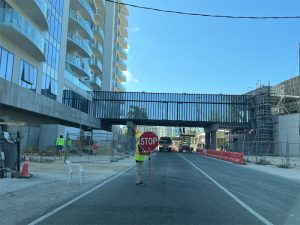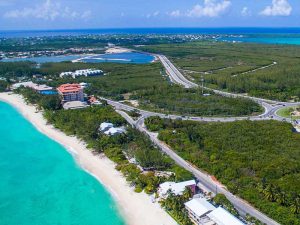Home » Information » Cayman History
Cayman Islands History
Although the Cayman Islands celebrated its 500th birthday – its Quincentennial Year – in 2003, marking the first sighting of Cayman Brac and Little Cayman by Christopher Columbus, it was only about three hundred years ago that people began to settle permanently on these islands.
With no archeological evidence that Amerindians ever inhabited the Cayman Islands, it is believed that the first people to actually land here were sailors from Sir Francis Drake’s 1585-6 expedition to the West Indies.
A Brief History of the Cayman Islands
Over the next several hundred years, despite the treacherous fringing reefs surrounding the islands and the presence of large salt water crocodiles – the Caimans, for which the islands were eventually named – they became a popular stop for sailors, including the Caribbean’s infamous buccaneers, who came to stock up on the abundant supply of fresh turtle meat and to careen their vessels.
Settling and Subsisting
Around 1700, the first settlers came to live on Grand Cayman, but brought with them the scourge of slavery that was to last until emancipation in 1835. Life was not easy for these pioneers, even for freemen, who made a living from subsistence farming and fishing, turtling and woodcutting. At that time, mahogany, in particular, was in great demand for the furniture industry in Europe.
Can’t find the information you are looking for, use the
Cayman Islands GPT
Related Topics
In an inhospitable land, the Cayman people were enterprising, hardworking and skillful. They became well known as expert mariners and boat builders, and on all three islands men crafted shallow-drafted sloops and two-masted schooners that could carry cargo to and from the Cayman Islands. As the populations of turtles began to dwindle around these islands, the bigger ships also carried small boats and their two- or three-man crews to new turtling grounds.
Until the 1900s, the small craft used were dugout canoes, but in 1904, Captain Daniel Jervis on Cayman Brac designed and built the first catboat, a small, highly maneuverable double-ended boat that proved ideal for catching turtles. Thereafter, it became the ubiquitous mode of transport in the days before good roads and motor vehicles, transporting goods and people from place to place along the coastlines.
Early Government
When the English captured Jamaica from the Spanish in 1655, it also laid claim to the Cayman Islands, and in 1670 they were officially recognized as a British possession by Spain. Nevertheless, for the first 200 years or so of settlement, they remained one of the most isolated and neglected corners of the British Empire, and the Caymanian people, though technically under the administration of Jamaica, largely governed themselves.
In 1831, the first elected legislature was set up, though only free men were eligible to vote. (Indeed, legislation granting women the right to vote and to stand for election was not passed until 1958.) In 1863, the UK parliament formally declared the Cayman Islands a dependency of Jamaica, which put the islands in a better legal and economic position, not least because Cayman ships were no longer required to pay tonnage dues when entering Jamaican ports.
From the mid 1830s, the people of Grand Cayman started to settle in the Sister Islands, while others looked for an easier life in central America. Later, as the 18th century drew to a close, Caymanians also began migrating to the US, particularly Tampa, Mobile and Port Arthur. Strong family connections between the Cayman Islands and these areas of exodus remain until this day.
Progress came slowly to the Cayman Islands, and when the devastating hurricane of 1932 struck first the south coast of Grand Cayman and then the Sister Islands in November that year, it found an unsophisticated people, some of whom were still living in simple wattle and daub houses, totally unprepared for the ferocious storm. Few homes were left standing on Cayman Brac and Little Cayman by the time the storm had passed and more devastating still, 69 people of the roughly one thousand living on the Brac were dead, as well as 39 Brac men lost at sea.
Economic Growth
But from this low point in Cayman history, a remarkably successful small island economy grew. After the Second World War and up to the early 1980s, the majority of Caymanian men, renowned for their seamanship, found work in the shipping industry, working on the large cargo ships and tankers criss-crossing the world. Though they were often gone for long periods of time, leaving the women to cope at home, the men sent home the money they earned to their families, thereby fueling the economy and also bringing home with them new ideas and technology.
In 1950, an Englishman, Benson Greenall, was the first to realize the tourism possibilities of Seven Mile Beach and built the first hotel, igniting an industry that became one of the twin pillars of the economy and continues to expand today. In the late 1960s, the first cruise ships called in at George Town, but these visits were rare and in the first half of the 1970s, no more than eight arrived in one year. However, in the 1990s, cruise ship tourism exploded, and in 2007 more than 1,700,000 passengers entered Cayman waters.
When Jamaica chose independence in 1962, the Cayman Islands opted to retain its links with Britain, a decision that continues to lend it political stability and has aided the growth of the second pillar of the economy: the financial sector. Following the lead of Bermuda and the Bahamas, the Cayman Legislative Assembly passed the Banks and Trust Companies Law of 1966, which laid the basis for offshore finance services. However, much of Cayman’s initial offshore success is attributed to Vassel G. Johnson – later knighted Sir Vassel by Britain’s Queen Elizabeth.
In 2004, Hurricane Ivan unleashed storm category 4 winds and subsequent floods on Grand Cayman and many buildings were severely damaged. However, financial services were operational almost immediately afterwards and tourism, which suffered a major setback, is now back on track. Moreover, buildings are now constructed to resist storm force winds, leaving less chance that any future hurricanes would result in similar damage.
From humble beginnings, the Cayman Islands now boasts telecommunications services, financial expertise and infrastructure to rival large industrial nations and a notably high standard of living. Grand Cayman, Cayman Brac and Little Cayman are well equipped to sail through the 21st Century.






